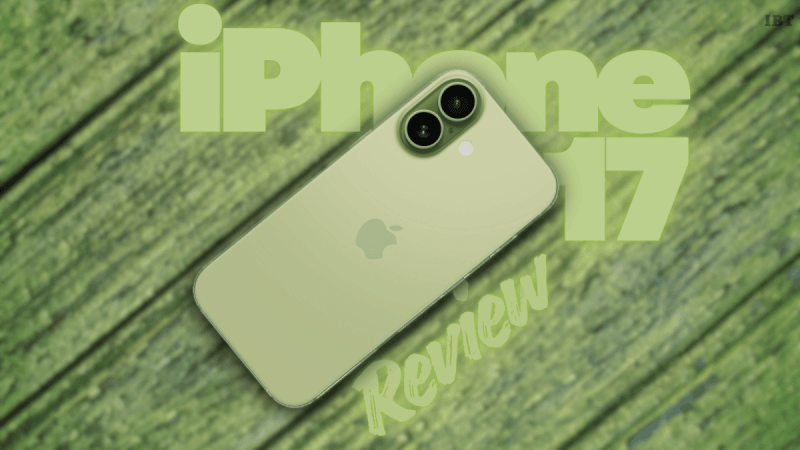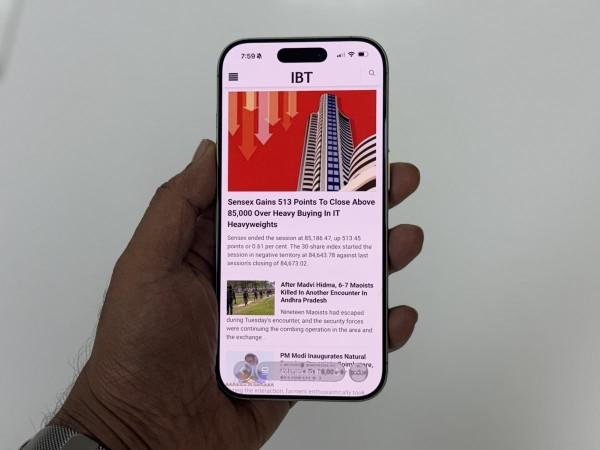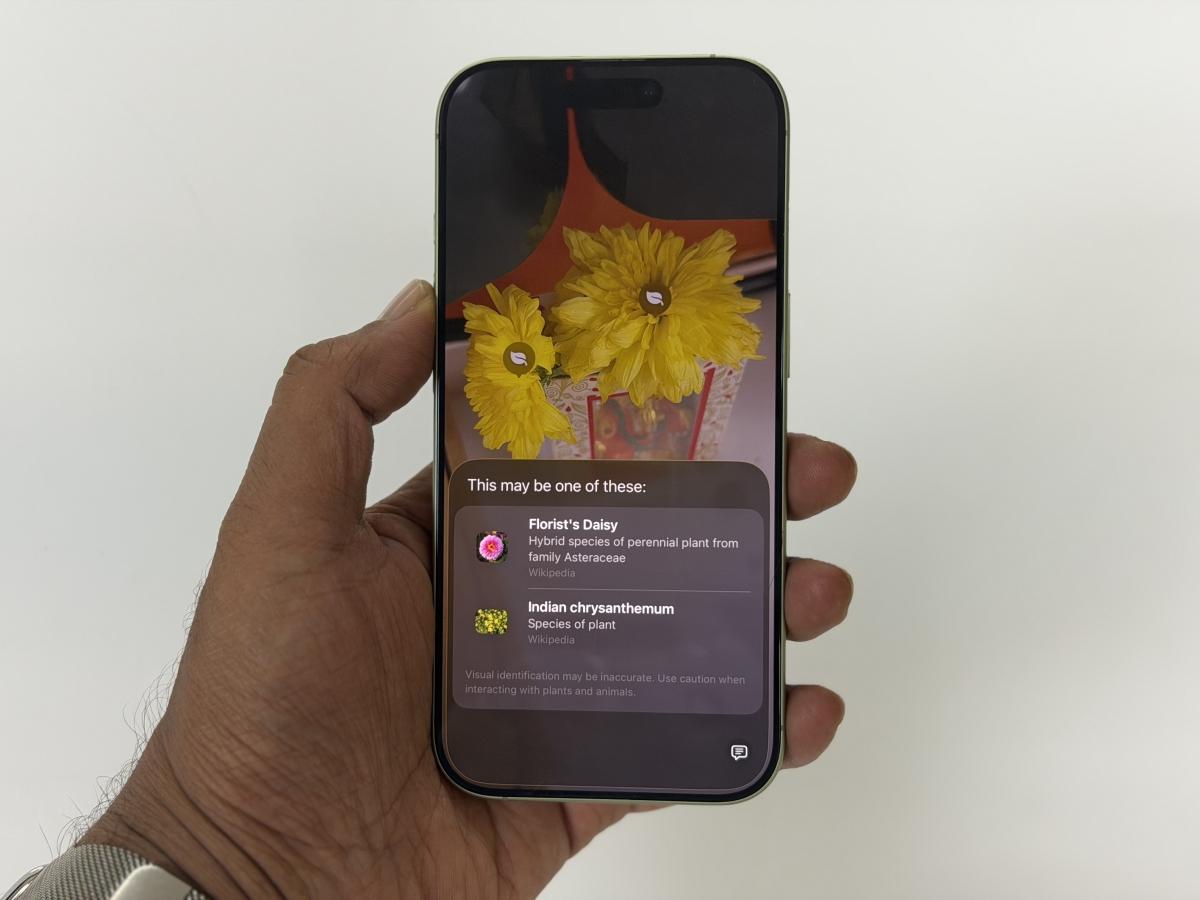
The 2026 iPhone lineup did change a lot of things. There was an expected reshuffle of the lineup, killing the Plus model and replacing it with an all-new "Air." But the best-selling model, the vanilla entry-level iPhone, did the most talking. iPhone 17 came with many surprise moves, those that prove it worthy of an upgrade to the masses.
After spending more than a month with the iPhone 17, one thing becomes crystal clear—Apple has finally nailed the formula for its standard iPhone. While its yearly updates often tread the fine line between evolution and repetition, this one feels different. It's not a reinvention of the wheel but a refinement of nearly everything that matters. From display smoothness to day-long endurance and everyday usability, the iPhone 17 feels like the most complete non-Pro iPhone Apple has ever made.
Design: Familiar yet refined

At first glance, the iPhone 17 could easily pass for last year's model. Apple hasn't gone radical here—the aluminum frame, the Ceramic Shield glass, and the symmetrical bezels remain, all lending the device a clean, premium aesthetic. And that in-hand feel, is very much Apple, very much premium. But look closer, and the subtle refinements become apparent. The phone feels slightly more ergonomic thanks to softened edges, and the pastel color options add a refreshing modernity without being flashy. It still strikes that perfect balance between sophistication and approachability.
Finally, a 120Hz display for everyone
This is the single most important upgrade. Apple has at last brought its ProMotion 120Hz refresh rate to the standard iPhone, and the difference is instantly noticeable. Scrolling, swiping, and switching between apps feels effortlessly smooth. Going back to a 60Hz screen feels jarring after this.

The Super Retina XDR display itself is brighter and more color-accurate than before, offering stellar HDR performance while maintaining excellent outdoor visibility. It's the kind of change that doesn't scream innovation but fundamentally changes how fluid the iPhone feels. And quite frankly, this is the upgrade that finally shuts all the criticism that the vanilla iPhones have been subjected to in recent years.

Cameras: A Dual Setup That Delivers
The iPhone 17 sticks to its dual 48MP rear camera system, but it's one that punches well above its weight. The main sensor shines, especially in low light, capturing stunning detail while preserving color accuracy without artificial overprocessing. But what really stood out is just how well Apple has improved the Night mode. It works faster than before, which means less waiting for shots to process. The ultrawide camera is also sharper, with improved macro capabilities that make close-up shots surprisingly detailed.
The 18MP front-facing camera—shared with the iPhone 17 Pro—brings real improvements. Selfies now look cleaner, with better exposure and skin tones. Its standout feature, however, is Center Stage, which automatically pans and zooms during group selfies or video calls, ensuring everyone stays in frame. It's a small but delightful touch that makes casual shooting more flexible. And it works so effortlessly. With a manual override, we could switch between the best aspect ratio to capture the perfect frame.

For someone who shoots a lot of videos, the iPhones are the gold standard. The 4K 60fps setting is ideal for me and the iPhone 17 didn't let me down despite being a non-Pro phone. But the introduction of Dual Capture is a smart addition. It helped greatly in covering events while giving live commentary without being out of the camera frame.
Still, not everything is perfect. The lack of a telephoto lens means zoom shots rely on digital cropping, losing detail past 2x magnification. Apple's Camera Control button still remains stubbornly elusive. The muscle memory still hasn't adjusted to the Camera Control, and I doubt anyone will miss it even if Apple removes it. In technical perspective, the Camera Control still doesn't allow manual settings like ISO or shutter speed, limiting creative flexibility for advanced users. One practical use I could get behind was using the Camera Control for selfies in portrait orientation.
Enough words, we'll just let pictures do the talking:
Personalisation meets polish
Running iOS 26, the iPhone 17 steps up the personalization game. Apple may have taken a page from Android's playbook and added its signature polish, making it its own. The lock screen, for instance, now supports rotating photo collections, smart depth effects, and adaptive typography that ensures your favorite faces and scenes aren't obscured. Combined with Apple Intelligence's subtle enhancements, the phone feels more adjusted to you — your habits, your photos, your rhythm—and still feels iOS in every way.

Though the Liquid Glass design was met with criticism at launch, I kind of liked the whole execution. The new iOS 26 also brought a redesigned camera UI, which was unfamiliar at first but proved to be more practical. One iOS 26 feature that came in really handy was the call screening, since spam calls are now more of a nuisance than ever. I regularly used the voice note transcriptions, and it worked with great accuracy.
While I couldn't get more use out of Camera Control for clicking shots, it was a handy tool while accessing Visual Intelligence. My ever-so-curious daughter would ask a zillion questions, and the Visual Intelligence feature made me appear smart in topics beyond my knowledge.
Intelligence?
Apple's "Apple Intelligence" suite is a bit of a mixed bag here. Features like live message translation, smart replies, and transcription work beautifully; I have worked with them on more than one occasion, but there's a sense of untapped potential here. Unlike Google's AI-driven Pixel tools that can erase photo distractions or summarize long texts, Apple's integration is modestly lagging behind. It's polished but not transformative, suggesting bigger things to come—but not quite yet.
Performance and battery: Dependable as ever
Powered by the latest A19 chip, the iPhone 17 handles everything with composure. It breezes through multitasking, gaming, and editing without a hint of lag. The new chip also brings improved efficiency, and it shows—the iPhone 17 gets a boost in battery, lasting comfortably a day with mixed usage. The increased battery size also plays a part here.
In terms of real-world battery tests, there's not a major leap when compared to the iPhone 16, but even a slight improvement is a welcome move. The all-day battery claim holds good in this case, with a fully charged iPhone 17 ending the day before the power-saving mode kicked in at 20%. This was with mixed usage of calls, IMs, internet browsing, and a bit of streaming content and music. But if you're a power user, like in our case having to shoot video bytes or gaming extensively, the battery will definitely need a top-up before the day ends.

Charging speeds remain conservative—no lightning-fast charging here—but are still a marked improvement from last year. Apple's 20W adapter gets you to about 65% in half an hour, which is great in iPhone terms. MagSafe and Qi2 wireless charging continue to work seamlessly.
Running graphic-draining games ran without issues and without any heating, even though the phone lacks vapour cooling like its Pro sibling. The way the RAM optimization has been done in sync with the A19 chip shows in its high-performing tasks.
Best all-rounder in the lineup
Between the SE and the ultra-thin iPhone Air, the iPhone 17 now sits in a sweet spot. It borrows some of the major Pro-level features—the 120 Hz display, improved cameras, faster chip, and larger 256GB base storage—without the luxury price tag. It feels premium, runs fast, lasts long, and has enough future-proofing to comfortably last five years (iOS rules).
If you're an average iPhone buyer who just wants everything that matters—fluid performance, dependable cameras, a strong battery, and iOS polish—this is the one to get. The iPhone 17 might not be the flashiest or the thinnest, but it's hands down the most balanced and enjoyable iPhone experience in years. So yes, this is the iPhone to buy in 2025. Period.
iPhone 17 pricing in India
256GB—Rs 82,900/-
512GB—Rs 102,900/-










































